
Golden hour illuminates the Sabino Canyon Recreation Area, casting the saguaro cacti in relief against a vibrant sky and Santa Catalina Mountains
Browse 590+ santa catalina mountains stock photos and images available, or search for tucson mountains or tucson arizona to find more great stock photos and pictures.

Golden hour illuminates the Sabino Canyon Recreation Area, casting the saguaro cacti in relief against a vibrant sky and Santa Catalina Mountains

This photograph showcases the rugged beauty of the Santa Catalina Mountains viewed from Sabino Canyon Recreation Area with lush desert vegetation.

Sunrise bathes the Santa Catalina Mountains and saguaro-filled Sabino Canyon in vibrant colors, captured in a panoramic view.

Tucson Arizona skyline and Santa Catalina Mountains at dusk.

Located in Coronado National Forest just north of Tucson, Arizona, the Santa Catalina Mountains are considered Tucson's most prominent mountain range. Vegetation varies from ponderosa pines on Mount Lemmon (the highest peak at just over 9,000 feet) to unique desert vegetation in lower elevations. At approximately 2,500 feet, the foothills appear miniaturized in comparison to the majestic mountains. Panoramic, HDR image.

Panorama of saguaro with morning light in Santa Catalina Mountains, Tucson, Arizona, USA.
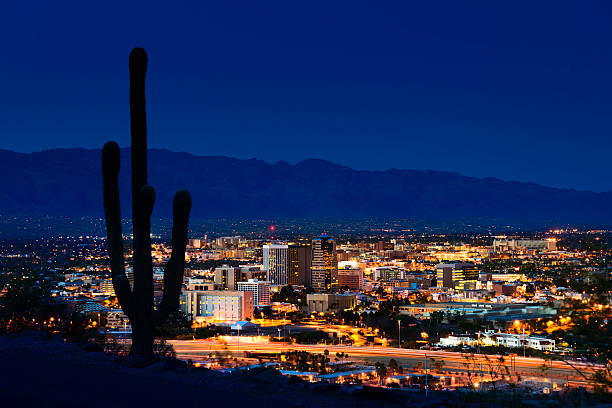
Tucson Arizona at night framed by saguaro cactus and Santa Catalina Mountains
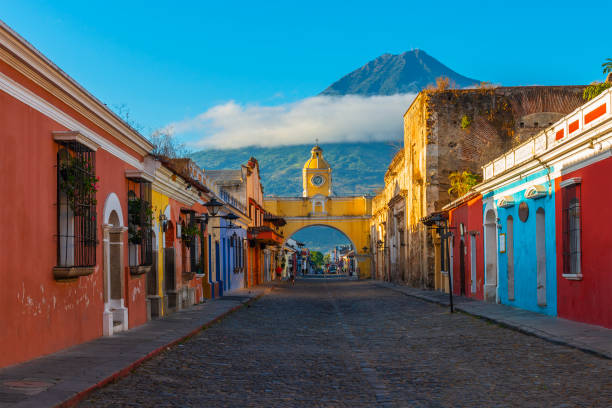
Cityscape of the main street and yellow Santa Catalina arch in the historic city center of Antigua at sunrise with the Agua volcano, Guatemala.

Long exposure of a luxury hotel resort. A golf course and pond is in the foreground and foothill mountains in the background.

Tucson Arizona skyline cityscape framed by saguaro cactus and mountains

Aerial view of Downtown Tucson and the Tucson area with a Saguaro Cactus in the foreground and dramatic clouds and the Santa Catalina Mountains in the background, during summertime (including during the summer monsoon.)

Colorful sunset sky and clouds over the hodoos along the Catalina Highway on Mount Lemmon near Tucson, Arizona.

A hill with Saguaro Cactuses in the foreground and Tucson skyline and the Santa Catalina mountain range in the background.

Downtown Tucson aerial view with a park in the foreground and the Tucson cityscape and the Santa Catalina Mountains in the far distance.

desert landscape, springtime with blooming wildflowers
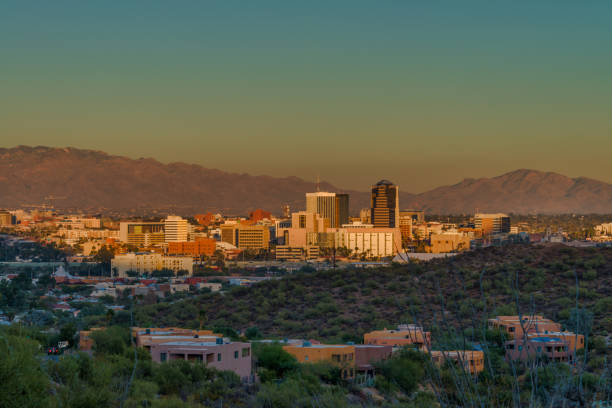
Tucson Arizona USA skyline city desert Southwest tourist destination

Stock photograph of a road at the foothills of Santa Catalina Mountains, Tucson, USA

Tucson Arizona skyline and Santa Catalina Mountains at dusk.

vacation get away; recreational location; travel adventure; desert wonderland

vacation get away; recreational location; travel adventure; desert wonderland

The Tucson city lights at sunset from the Catalina Mountains.

Seven Falls, at the end of Bear Canyon Trail in Tucson, Arizona

Mt Lemmon with Saguaro cactus with Tucson in the background
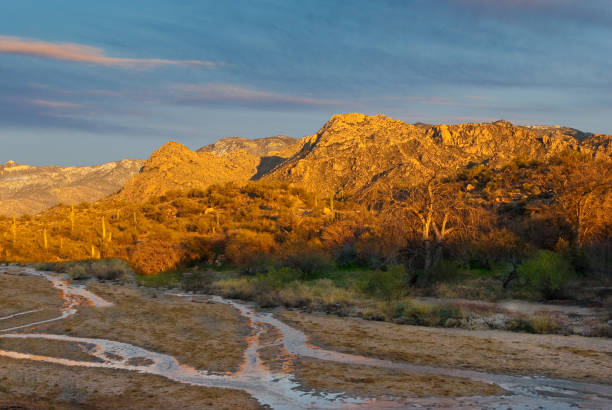
The Santa Catalina Mountains formed about 20 million years ago when tremendous heat and pressure from volcanoes caused this flat land to buckle and arch. This photograph of Sutherland Wash and the Santa Catalina Mountains was taken at sunset in Catalina State Park near Oro Valley, Arizona, USA.

At the bottom of Sabino Canyon, in the Santa Catalina Mountains, just north of Tucson, Arizona, lies the tranquil Sabino Creek, in early Spring.

The Saguaro Cactus (Carnegiea gigantea) is one of the iconic plants of the Sonoran Desert in Southern Arizona and Western Sonora, Mexico. These plants are large cacti that develop branches as they grow and mature. The branches generally bend upward but not always. The fluted trunks and branches of the saguaro are covered with protective spines. In the late spring the plant develops white flowers and red fruit forms in the summer. Saguaros are found only in the Sonoran Desert. To thrive they need water and the correct temperature. At higher elevations, the cold weather and frost can kill the saguaro. The Sonoran Desert experiences monsoon rains during July and August. This is when the saguaro obtains the moisture it needs to survive and thrive. These saguaro cacti were found in Catalina State Park near Tucson, Arizona, USA.

Car drives on a road in the Catalina Foothills area of Tucson, Arizona, USA with the Santa Catalina Mountains in the background.

Panoramic view of Tucson, Arizona, with downtown buildings surrounded by desert landscape, saguaro cacti, and Santa Catalina Mountains at sunrise.

Stock photograph a residential district in the foothills of Santa Catalina Mountains, Tucson, USA.
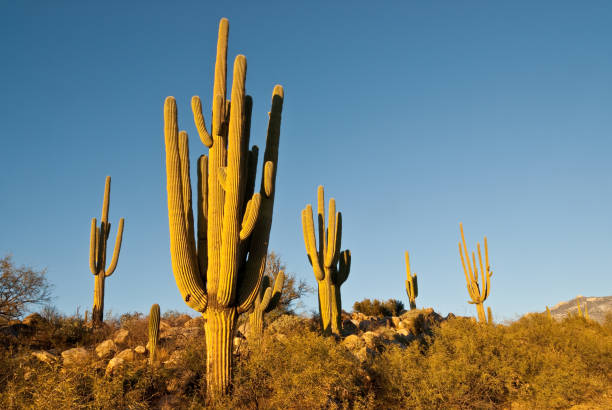
The Saguaro Cactus (Carnegiea gigantea) is one of the iconic plants of the Sonoran Desert in Southern Arizona and Western Sonora, Mexico. These plants are large cacti that develop branches as they grow and mature. The branches generally bend upward but not always. The fluted trunks and branches of the saguaro are covered with protective spines. In the late spring the plant develops white flowers and red fruit forms in the summer. Saguaros are found only in the Sonoran Desert. To thrive they need water and the correct temperature. At higher elevations, the cold weather and frost can kill the saguaro. The Sonoran Desert experiences monsoon rains during July and August. This is when the saguaro obtains the moisture it needs to survive and thrive. These saguaro cacti were found in Catalina State Park near Tucson, Arizona, USA.

Hiking trail in Bear Canyon in Sabino Canyon Recreation Area Park in the Sonoran Desert along the Santa Catalina Mountains in Tucson, Arizona.

Hoodoos and colorful sunset sky along the Catalina Highway in the Santa Catalina Mountains near Tucson, Arizona.

Tucson Arizona skyline and Santa Catalina Mountains at sunset.

Springtime in the Sonoran Desert near Tucson Arizona.

Located in Coronado National Forest just north of Tucson, Arizona, the Santa Catalina Mountains are considered Tucson's most prominent mountain range. The nation’s largest cactus, the majestic Saguaro cactus, as well as cholla and prickly pears are also abundant in the desert. Panoramic, HDR image.

Sabino Canyon is a desert canyon in the mountains of Southern Arizona and a popular hiking destination. Sabino Creek flows down the canyon. Sabino Canyon began with the formation of the Santa Catalina Mountains over 12 million years ago. The present-day varieties of plant life began appearing between 6,000 and 8,000 years ago. The earliest human occupants of the area were the Native American Hohokam people. In 1905, Sabino Canyon was placed under the control of the United States Forest Service. This view of a Giant Saguaro forest was photographed from the Esperero Trail. Sabino Canyon is in the Coronado National Forest near Tucson, Arizona, USA.

Tucson Skyline and Santa Catalina Mountain range from Sentinel Peak Park, Tucson, Arizona, USA

Aerial panoramic image of the foothills of Tucson and the beautiful Santa Catalina Mountain Range.

One of the main waterfalls at Seven Falls in the Catalina Mountains north of Tucson, Arizona. This is one of the most popular hiking destinations in the area.

Tucson downtown skyline and aerial overview (including the University of Arizona) w/ Catalina Mountains at dusk.

As seen from Sentinel Peak Park, downtown Tucson, Arizona, is located on the far side of the Santa Cruz River. The majestic Catalina Mountain Range can be seen in the distance under a clear blue sky.

Downtown Tucson skyline aerial view with the Santa Catalina Mountains and the University of Arizona in the background.

As seen from Sentinel Peak Park, downtown Tucson, Arizona, is located on the far side of the Santa Cruz River. The majestic Catalina Mountain Range can be seen in the distance.

Saguaro National Monument and the Catalina Mountain range of Tucson, Arizona in the soft morning light.

vacation get away; recreational location; travel adventure; desert wonderland

Saguaro National Park is an American national park in Pima County, southeastern Arizona.

The Saguaro Cactus (Carnegiea gigantea) is one of the iconic plants of the Sonoran Desert in Southern Arizona and Western Sonora, Mexico. These plants are large cacti that develop branches as they grow and mature. The branches generally bend upward but not always. The fluted trunks and branches of the saguaro are covered with protective spines. In the late spring the plant develops white flowers and red fruit forms in the summer. Saguaros are found only in the Sonoran Desert. To thrive they need water and the correct temperature. At higher elevations, the cold weather and frost can kill the saguaro. The Sonoran Desert experiences monsoon rains during July and August. This is when the saguaro obtains the moisture it needs to survive and thrive. These saguaro cacti were silhouetted at sunset in Catalina State Park near Tucson, Arizona, USA.

Tucson skyline aerial, with a saguaro cactus in the foreground and huge clouds and the Santa Catalina Mountains in the background.

Photographed from "A" Mountain around 5 PM. This is winter in Tucson. Catalina Mountains in Background.

Tucson city skyline with a Saguaro Cactus in the foreground and the Catalina Mountains in the far distance.

Saguaro cactus of the Sonoran Desert and snow in the Catalina Mountains outside Tucson, Arizona.